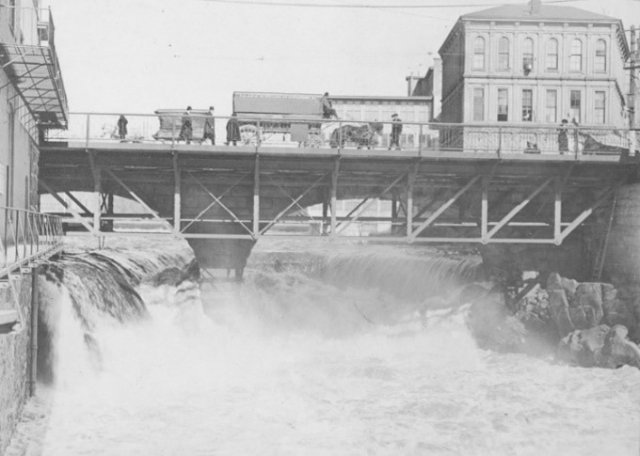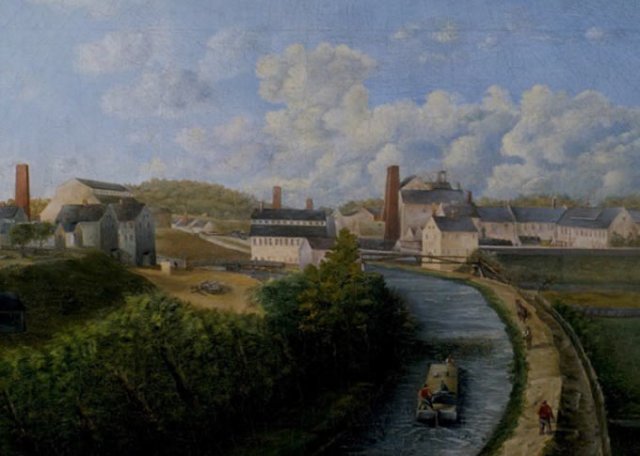Re-Zapping the Blackstone: Keeping the River Recovery Going!
April 2021
The Narraganset Bay Estuary Program, with funding from SNEP, is working to develop a needs assessment for the Blackstone River watershed. The goal of this project is to convene a diverse group of local stakeholders to identify and prioritize the needs of the watershed, and to increase human capacity through collaboration with groups in and around the Blackstone River watershed.
The Blackstone River flows 48 miles from Worcester, MA down to Pawtucket, changing its name to the Seekonk River before it reaches Providence, RI, making it the longest tributary to the Narraganset Bay. The watershed's rivers, streams, wetlands, and ponds provide habitat for a multitude of aquatic organisms, including over 30 species of freshwater fish, and include the largest freshwater wetland in RI (essential for migratory birds on the Eastern Flyway). The watershed also holds strong cultural and historical value. It is the birthplace of the American industrial revolution, it is a culturally important river for the Nipmuc, Narragansett, and Wampanoag people, and it provides recreational opportunities and river access to multiple communities. Its location, habitat value, and history have made the Blackstone River and its watershed vital to the ecological and socioeconomic health of the region.
As the birthplace of the American industrial revolution, the Blackstone River played a significant role in the development and prosperity of the Southeast New England region. But however prosperous it was for communities, the century or more of intense industrial development altered the hydrology and ecology of the river and its watershed. By the end of the 1800's the addition of dams and the creation of channels had blocked fish runs and has prevented the migration of anadromous fish like Atlantic salmon and American shad ever since. From the land side, the intense industrial development left a legacy of polluted waters from unregulated industrial discharges and untreated sewage, as well as contaminated soils and despoiled landscapes from industrial waste (including heavy metals). The river was considered "one of America's most polluted rivers" by Audubon magazine in 1971 and "the most polluted river in the country with respect to toxic sediments" by the EPA in 1990. The decline of the textile and metal industries created significant economic challenges, leaving struggling communities to deal with the environmental issues even as financial resources began to disappear.


Local efforts starting with the "Zap the Blackstone" clean up in 1972 have been successful at reducing pollution from legacy industrial sites, wastewater treatment plants, and new development. As a result of the work done by river advocates, the implementation of Clean Water Act programs, and local ordinances, the Blackstone River watershed has seen substantial environmental improvements. Because of these efforts over the last 50 years, the Rhode Island portions of the Blackstone River are no longer impaired for phosphorous and dissolved oxygen (303(d) Impaired Waters, RIDEM, 2021), the river and its watershed are on the road to recovery.
Yet even with these substantial improvements, a lot more work is needed to fully restore the river and to ensure a healthy and resilient watershed. Nutrient pollution, high bacteria counts, and low water clarity continue to prevent the river from achieving "fishable and swimmable" status. Future development also poses an environmental threat, as more people are moving from the industrial centers of Worcester and Providence to rural areas, replacing forested areas with impervious surfaces, which can lead to increased pollution secondary to stormwater runoff (see "Flow Duration Curves").
Blackstone River advocates today are passionate about continuing their work until a fully healthy watershed is restored. However, the main problem they are facing is identifying the best path forward, including how to continue work with limited capacity. The needs assessment project is ongoing and will wrap up in September with the release of a final report, which will include recommended actions to help delineate the next years of restoration work. Most importantly, the project aims to inspire a new generation and encourage more community involvement in the restoration of the Blackstone River Watershed, so that it can become a vibrant ecosystem for all.
To learn more about the Blackstone Needs Assessment Project please visit:
https://www.nbep.org/blackstone-needs-assessment
Or watch our SNEP Chat interview with Mike Gerel, Program Director, NBEP
